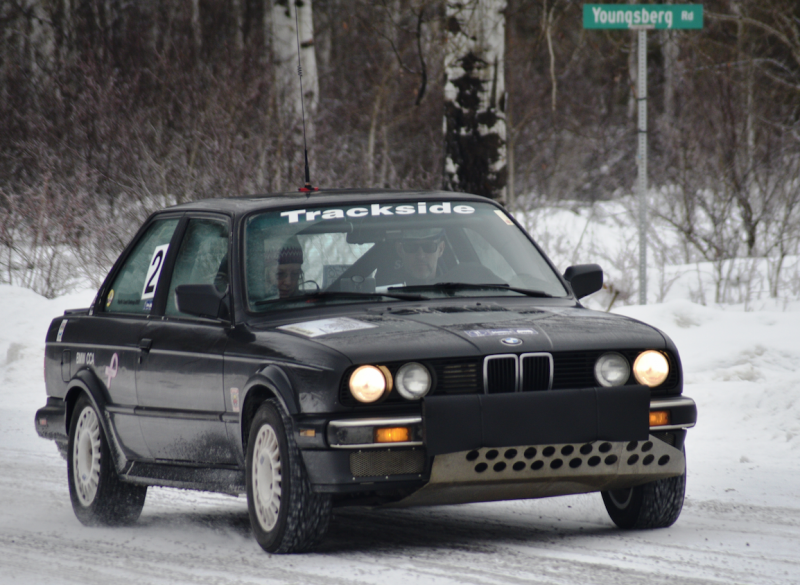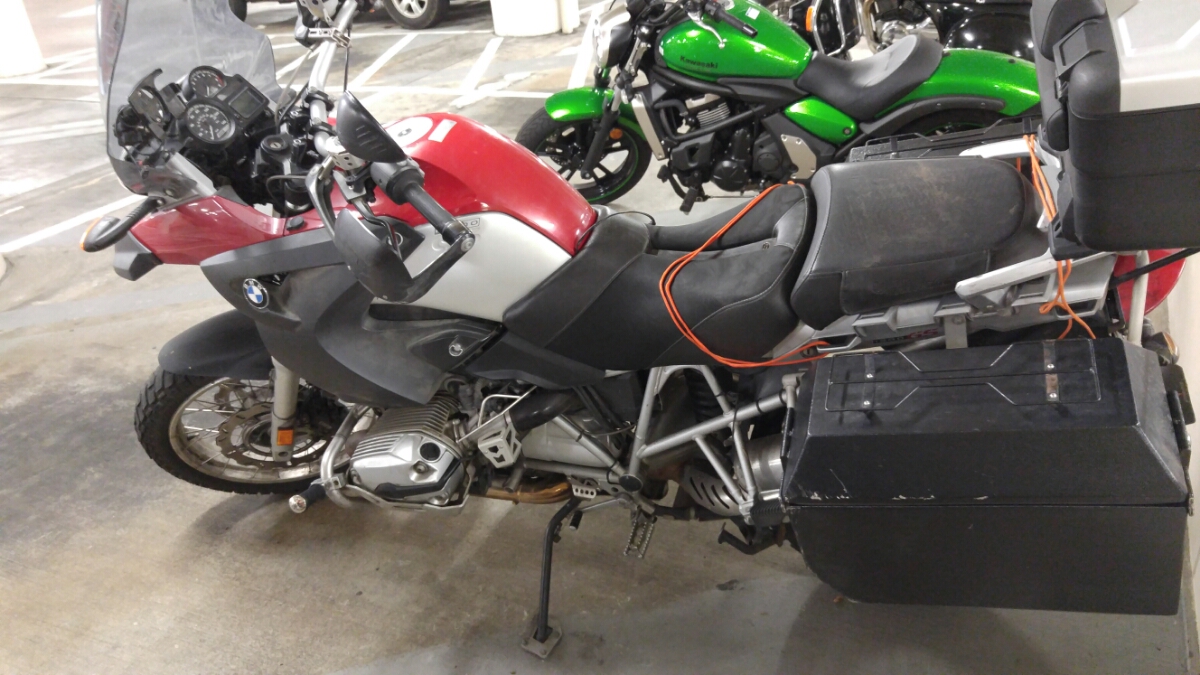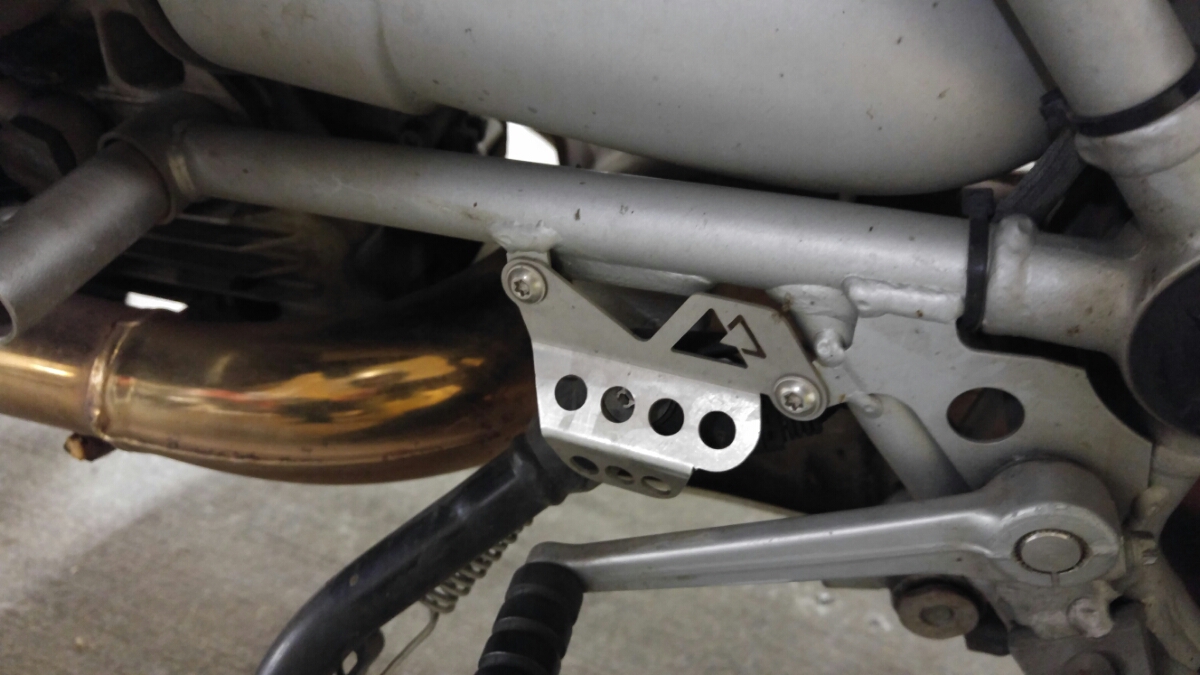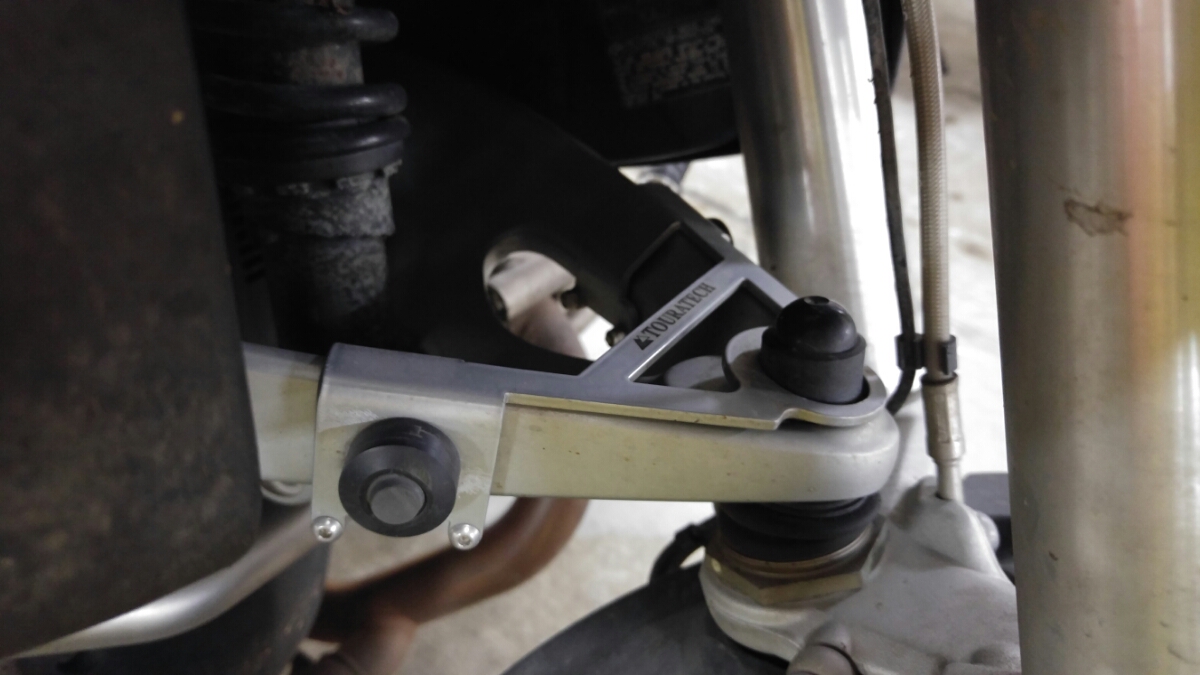Kinda chilly at 6500 ft
Author: bc
Soft silver underbelly
The 996’s flat-six motor is mounted behind the rear axle. To lower the the car’s C.G., the motor’s mounted low. And, to make it light, the motor’s made mostly of aluminum.
This all means that when you (or the previous owner, heh) backs the car up into a parking space and scrapes the curb, the lowest, rearest aluminum edge on the motor (the edge of the oil pan) is going to give way when it meets the concrete.
 non-discriminatory scrapage (both sides)
non-discriminatory scrapage (both sides) 
Yeech.
I started scheming on a UHWM polyethelene sheet to cover the pan, but — whatyaknow? turns out Porch has an accessory bottom plate that pretty much bolts on. I took the weazy way out, wabbit.

Redwood drive
Bad Dog in Cali
Rally Wheels
For the wet and rough roads of Targa Newfoundland, 18″ low-profile tires are not the ticket. Something with a bit more sidewall is called for; and to mount the big skins, some rugged Braid wheels.
Despite the additional strength of the FullRace RallyX wheels, they’re each more than 10 pounds lighter than the OEM stuff – taking that much unsprung weight off each corner.

Spring cleaning
The 996 has twin forward-mounted radiators, one each side. They’re hung in the bodywork just front of the front wheels, at an angle, with large ducts funneling air to ’em. Internet rumors said they pickup a good amount of debris over time, so I thought I’d better check & maybe clean them.
Internet rumors are right.


The Thunderbird 2016
The only constant is change.
All our equipment was slightly different this time. Same model car, but twice as much power. Same brand of tires, but a different size. Same rally computer, but different sensors and magnets. The results were … different, too. Normally a team is warming up on Saturday, and their scores are better on Sunday. Didn’t work that way for us; we fell from a close second place Saturday night to a distant fourth place at the end of the rally. Boo!
Some nice photos, though. 🙂
Here’s our ride, the Bad Dog.

The cars line up at the start of a typical section. The surface here wasn’t bad – you couldn’t walk on it without slipping, but studded tires bit well.

Super-dark out in the woods Saturday night, somewhere NE of Carmi.


There must be some mistake…
I ordered a large skid plate.

Targa in Roundel
Roundel is the magazine of the BMW Car Club of America. We’re longtime subscribers.
I enjoy dreaming through the classified ads, learning from the columnists, and laughing in the ‘Letters’ section. I’m not the only one who dislikes ‘run-flat’ tires.
And in the December issue, there’s this:
The author got it mostly right…









